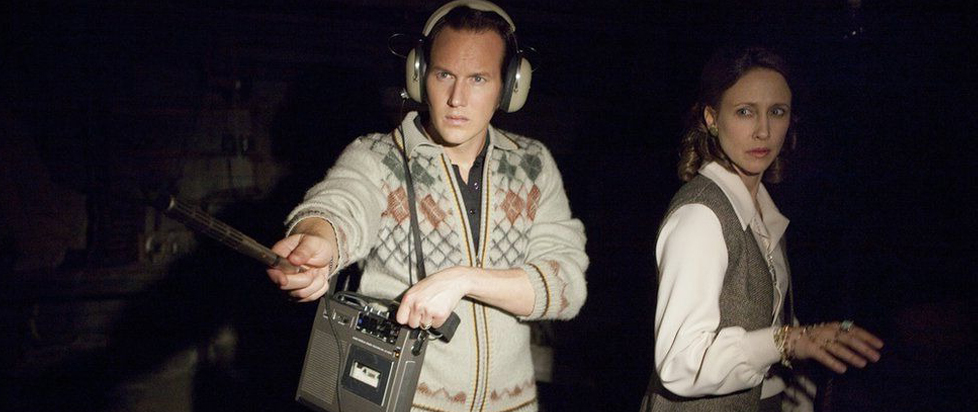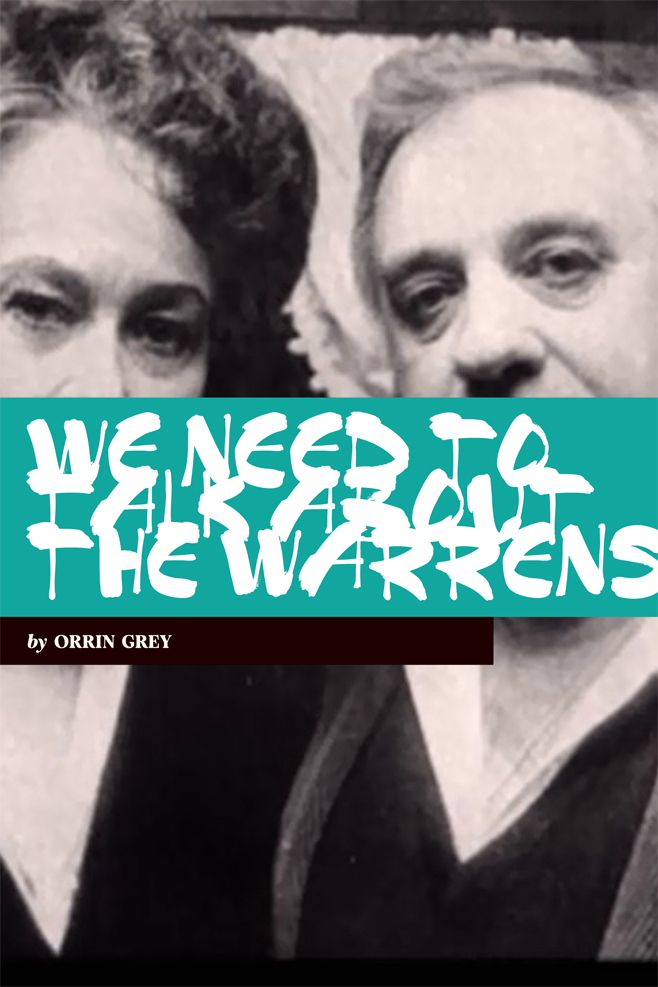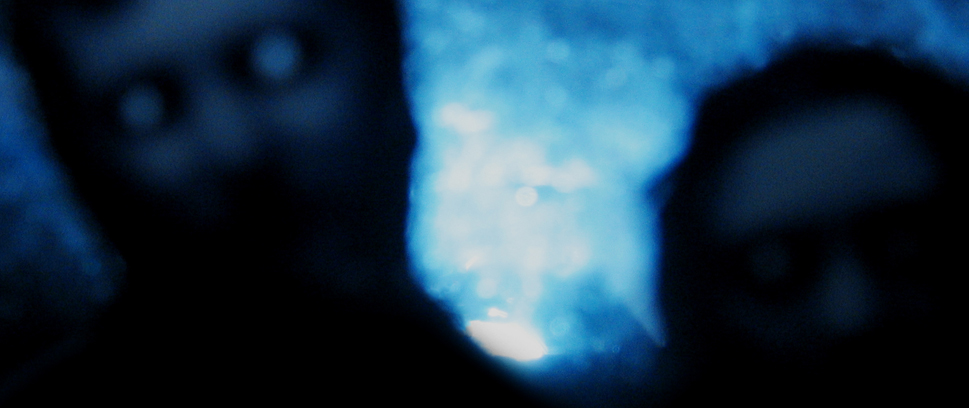
We Need to Talk About the Warrens
This is a feature story from Unwinnable Monthly #169. If you like what you see, grab the magazine for less than ten dollars, or subscribe and get all future magazines for half price.
———

For years, Ed and Lorraine Warren were known predominantly by those who had a particular interest in ostensibly real paranormal phenomena. They were notorious for their involvement in some of the most famous “true” haunting cases (Amityville, Enfield and so on), for their Occult Museum (which, in reality, looked more like a garage sale for a Halloween haunted house than the very cool museum in the movies) and for the fact that they were probably full of shit.
There is plenty of evidence that the Warrens were hucksters who exploited vulnerable people for their own profit. Ray Garton, a horror author who was hired to write the book In a Dark Place for them, has gone into some rather scathing detail about their activities. It’s easy enough to find more online, but you can get some of Garton’s side of things in this interview or on his website. A 1997 investigation on behalf of the New England Skeptical Society, meanwhile, found that the Warrens may have been pleasant enough people to chat with, but they were also “at best, tellers of meaningless ghost stories, and at worst, dangerous frauds.”
Ed Warren died in 2006, Lorraine in 2019. So why do we need to talk about them now? Even if they were dangerous frauds while alive, their lives are over now and, since ghosts probably don’t really interfere with the living, they can no longer hurt us – or can they?
In 2013, Ed and Lorraine Warren became household names. Where their exploits had previously been largely unknown outside the circles of so-called paranormal investigations, The Conjuring made them the heroes of one of the most successful horror franchises in history. And while there is no doubt that the “based on a true story” logline of that film helped to propel the franchise to success, it is equally true that the real-life Warrens have cast a necessary pall over their cinematic counterparts.
I know plenty of people who refuse to watch The Conjuring or any of its various spin-offs on the grounds that the Warrens should not be lionized and, while Lorraine was still alive, certainly should not be able to profit from this bowdlerization (at best) of their legacy. And even though I enjoy (most of) the Conjuring films, I can’t say that those people have the wrong idea.

Hollywood movies that embellish supposedly true stories are nothing new. But there is something particularly egregious about the way that the Conjuring films transform two people who, in reality, were more than likely con artists at best and predators at worst, into figures so heroic as to be almost saintly. And that’s not even getting into the dangers inherent in championing the Warrens’ quasi-Catholic worldview, which posits dangerous spiritual warfare behind everyday activities.
One need look no further than the third film to officially bear the Conjuring moniker (and, massively, the seventh in the franchise) to see the peril here. Subtitled The Devil Made Me Do It, the film took inspiration from the real-life murder trial of Arne Cheyenne Johnson, in which the defense attempted to claim that their client was demonically possessed – according to some of those involved, a story cooked up by the Warrens in the first place.
Not only does the film massively repurpose the actual events of both the murder and the outcome of the trial, it also does something far more dangerous – it suggests that the Satanic Panic of the 1980s was fundamentally correct, rather than a vicious lie that destroyed far more lives than nefarious Satanists ever could have.
This revisionism is ahistorical, but it is also reckless and hazardous, especially today, when our very own new Satanic Panic is brewing, targeting teachers, librarians and perhaps most especially trans people and other vulnerable members of the LGBTQ community.
With all this groundwork having been laid, it would be easy to advocate, as many others have done, chucking the entire Conjuring franchise in the bin, and the Warrens with it. But there’s a problem with that, and it isn’t just that the Conjuring movies are mostly actually pretty good, or that they keep making money hand over fist – at the time of this writing, the latest installment has already raked in over $200 million in just a couple of weeks.

It’s that, regardless of the baggage of their real-life counterparts, the on-screen Warrens, as played by Patrick Wilson and Vera Farmiga, give us something that we desperately need. Something that movies in general – and horror in particular – has been missing.
The Warrens on the screen are good guys. They are (ever so slightly) flawed, sure, but they are ultimately good people trying hard to do the right thing. That’s not really it, though. A few years ago, in Nightmare magazine, I wrote an essay about the difference in horror between “victims” and “volunteers.”
The Warrens, as they are portrayed onscreen, represent an important swing back toward those “volunteers,” individuals who place themselves in harm’s way for reasons of their own, rather than being preyed upon by vicious and often random outside influences. It’s part of a larger course-correction in horror that is bound to happen after decades of films swinging the other way.
Even that isn’t really it, though. I think what it is, more than perhaps anything else, is that the Warrens in the film are happily married, still very much in love, and they support one another in their endeavors. There is no hint of infidelity or strain within their marriage, there is no one-upmanship or bickering between the two, and their plots usually revolve around their work, not their kids or stress within their relationship – though their daughter does occasionally get put into ghostly peril.
It’s a dynamic that is surprisingly rare in film, and one that is, I think, extremely welcome for a lot of people, whether they fully realize it or not. I think it is that need for representation of healthy, stable, supportive relationships in media that drives a part of the importance of the Warrens as fictional objects, despite the problems inherent in their less-than-fictional origins.
So, what do we do with them, given all that? It’s not easy to say. Whatever we may think of them, odds are the cinematic Ed and Lorraine Warren are going to be with us for some time now, and their fictional adventures will continue to obfuscate the truth of their real-life counterparts – which is almost certainly a bad thing. But since we’re stuck with them, at least they are providing something of value, too.
Whenever I find myself struggling with my conflicting feelings about the whole situation, I think back on a credit at the beginning of The Conjuring 2, which states that the picture is “based on characters created by” Chad and Carey Hayes, the screenwriters of the first film. Given that virtually the only recurring characters are Ed, Lorraine, and their daughter, I think this says a lot about their relationship to the real Warrens – and the relationship between the movies and any kind of reality.
———
Orrin Grey is a writer, editor, game designer, and amateur film scholar who loves to write about monsters, movies, and monster movies. He’s the author of several spooky books, including How to See Ghosts & Other Figments. You can find him online at orringrey.com.




